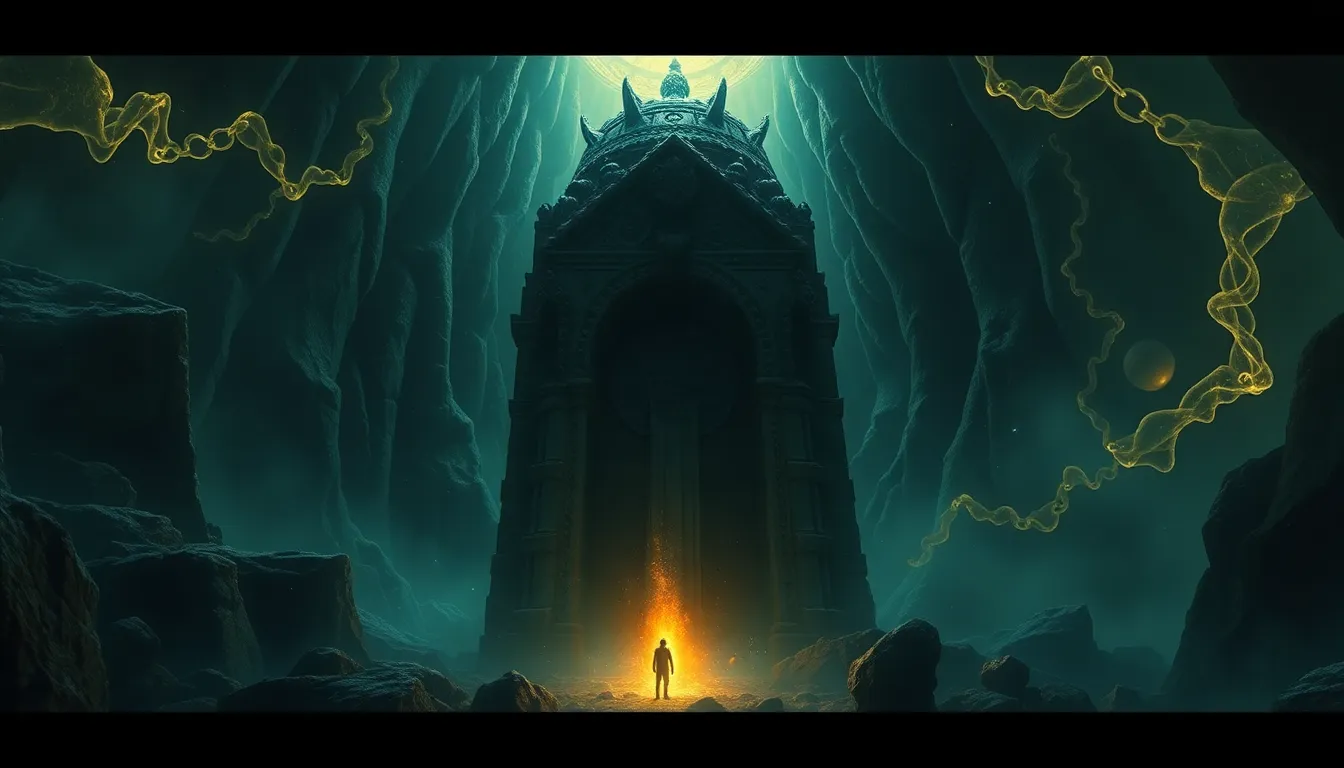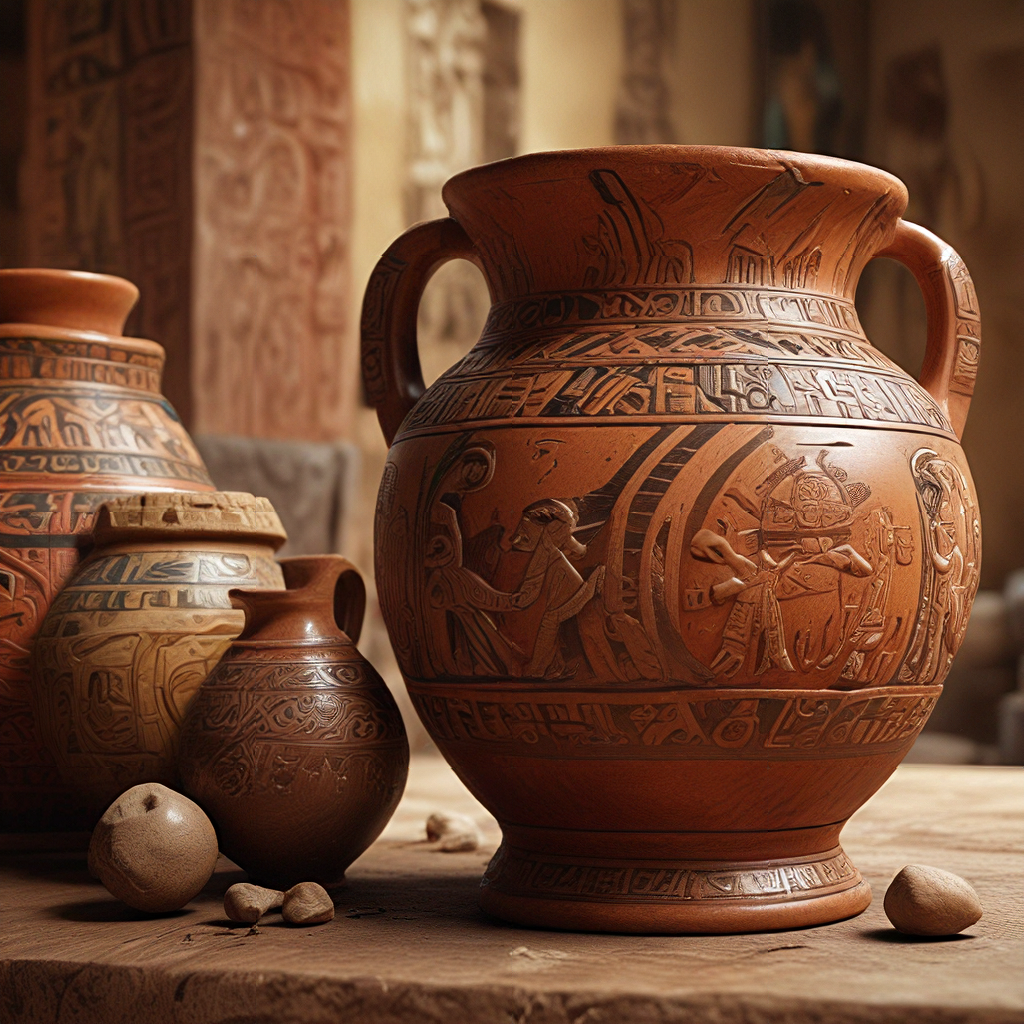Underworld Myths: The Secrets of the Afterlife Uncovered
I. Introduction to Underworld Myths
Underworld myths refer to the narratives and beliefs surrounding the afterlife and the realms that exist beyond death. These myths vary significantly across different cultures, reflecting diverse understandings of existence, morality, and the nature of the soul. Studying these beliefs offers invaluable insights into the values, fears, and aspirations of societies throughout history.
The importance of exploring underworld myths lies not only in their historical significance but also in their ability to shape cultural identity and societal norms. By examining these narratives, we can uncover the universal themes of life, death, and what lies beyond, as well as appreciate the distinct characteristics that define various cultural perspectives. This article aims to delve into the historical perspectives, cultural comparisons, roles of deities, and modern interpretations of underworld myths, shedding light on the intricate tapestry of beliefs surrounding the afterlife.
II. Historical Perspectives on Underworld Beliefs
A. Ancient civilizations and their views on the afterlife
Throughout history, ancient civilizations have developed rich tapestries of beliefs regarding the afterlife, each influenced by their unique contexts and experiences. Some notable examples include:
- Mesopotamia: The Sumerians and Babylonians envisioned a dreary underworld called Kur, where souls led a shadowy existence. The journey to this realm involved crossing the river of the dead, often requiring offerings to the ferryman, Charon.
- Ancient Egypt: Egyptians believed in a complex afterlife, where the soul would face judgment by Osiris and the weighing of the heart against the feather of Ma’at. A favorable judgment allowed the soul to enter the paradise of the Field of Reeds.
- Classical Greece and Rome: The Greeks depicted the afterlife as Hades, a realm divided into various sections, including the Elysian Fields for the virtuous and Tartarus for the wicked. Romans adopted these beliefs, adding their interpretations and nuances.
B. Evolution of underworld myths through history
Underworld myths have evolved over centuries, influenced by cultural exchanges, conquests, and the rise of major religions. As societies transformed, so did their beliefs about death and the afterlife, often integrating elements from neighboring cultures.
C. Influence of religion and mythology on societal norms
The narratives surrounding the afterlife have profoundly affected ethical and moral frameworks within societies. Many cultures established codes of conduct based on the rewards and punishments depicted in their underworld myths, influencing behaviors and societal values.
III. The Underworld in Different Cultures
A. Comparison of underworld depictions in various cultures
While there are many similarities in underworld myths, distinct differences also exist. A comparative analysis reveals unique characteristics:
- Greek Hades vs. Norse Hel: Hades is often portrayed as a somber but orderly realm, whereas Hel, governed by the goddess Hel, is depicted as a place for those who died of sickness or old age, reflecting a more nuanced view of death.
- Egyptian Duat vs. Aztec Mictlan: The Duat is a complex landscape filled with trials, while Mictlan is a more straightforward journey through nine levels, culminating in a final resting place.
B. Common themes in global underworld narratives
Despite cultural variations, several themes recur in underworld myths, including:
- The journey of the soul
- Judgment and reward/punishment
- The significance of rituals and offerings
C. Unique characteristics of specific underworlds
Each underworld possesses unique traits that reflect cultural values:
- In Hinduism, Yama is the god of death, and the journey to the afterlife involves navigating through various realms based on one’s karma.
- The Tibetan Book of the Dead describes an elaborate process of dying and rebirth, highlighting the importance of consciousness in the afterlife journey.
IV. The Role of Deities in Underworld Myths
A. Key deities associated with the underworld
Deities play crucial roles in guiding souls and governing the afterlife:
- Hades: The Greek god of the underworld, overseeing the realm and ensuring order among the dead.
- Osiris: In Egyptian mythology, he is the judge of the dead, determining the fate of souls based on their earthly deeds.
- Yama: The Hindu god of death, responsible for guiding souls to their next reincarnation based on their karma.
B. Interactions between gods and souls
These deities often interact with souls, guiding them through the afterlife process and offering them choices that reflect their previous lives and moral standings.
C. Symbolism of deities in cultural contexts
Deities associated with the underworld often symbolize deeper cultural values, such as justice, morality, and the cyclical nature of life and death.
V. The Journey of the Soul
A. Different beliefs about what happens after death
Beliefs about the afterlife vary widely. Some cultures view it as a linear journey towards a final destination, while others perceive it as a cyclical process of rebirth.
B. Rituals and practices to guide souls to the afterlife
Many cultures have established rituals to assist the deceased in their journey:
- Offering food and items to the dead, as seen in the Day of the Dead celebrations in Mexico.
- Funeral rites designed to protect the soul and ensure safe passage, common in many ancient cultures.
C. Significance of judgment and purification processes
Judgment plays a central role in many underworld myths, determining the fate of the soul based on its earthly actions. Purification rituals are also significant, allowing souls to atone for their misdeeds and attain a better status in the afterlife.
VI. Underworld Myths and Morality
A. How underworld narratives influence moral behavior
Underworld myths serve as cautionary tales, guiding individuals towards ethical behavior by illustrating the consequences of their actions in the afterlife.
B. The role of punishment and reward in myths
Many underworld narratives feature a clear dichotomy of reward and punishment, reinforcing societal values and norms. This serves to instill a sense of accountability and moral responsibility among individuals.
C. Cultural lessons derived from underworld stories
These myths often encapsulate profound cultural lessons about life, death, and the importance of living a virtuous life, providing a framework for understanding human experiences.
VII. Modern Interpretations of Underworld Myths
A. Influence of underworld themes in contemporary literature and media
Underworld myths continue to inspire modern literature, film, and art, often reinterpreting ancient narratives to explore contemporary themes of mortality, identity, and existence.
B. The psychological perspective on afterlife beliefs
Psychologists examine how beliefs in the afterlife can impact mental health, offering comfort and a sense of purpose in the face of mortality.
C. Relevance of ancient myths in modern spirituality
Modern spirituality often revisits ancient myths, blending them with contemporary beliefs to create a more inclusive understanding of life and death.
VIII. Archaeological Discoveries Related to Underworld Myths
A. Significant archaeological sites and findings
Archaeological discoveries provide tangible evidence of ancient beliefs in the afterlife, with sites like:
- The Pyramids of Giza, showcasing elaborate burial practices and beliefs about the afterlife.
- The Tomb of Tutankhamun, filled with artifacts intended for use in the afterlife.
B. Artifacts that provide insight into ancient beliefs
Artifacts such as burial items, tomb inscriptions, and ceremonial objects reveal intricate details about how ancient cultures understood death and the afterlife.
C. Impact of these discoveries on understanding underworld myths
These archaeological findings have deepened our understanding of underworld myths, illustrating the complexities of ancient beliefs and their evolution over time.
IX. The Future of Underworld Myths
A. Changing perceptions of death and the afterlife in modern society
As society evolves



